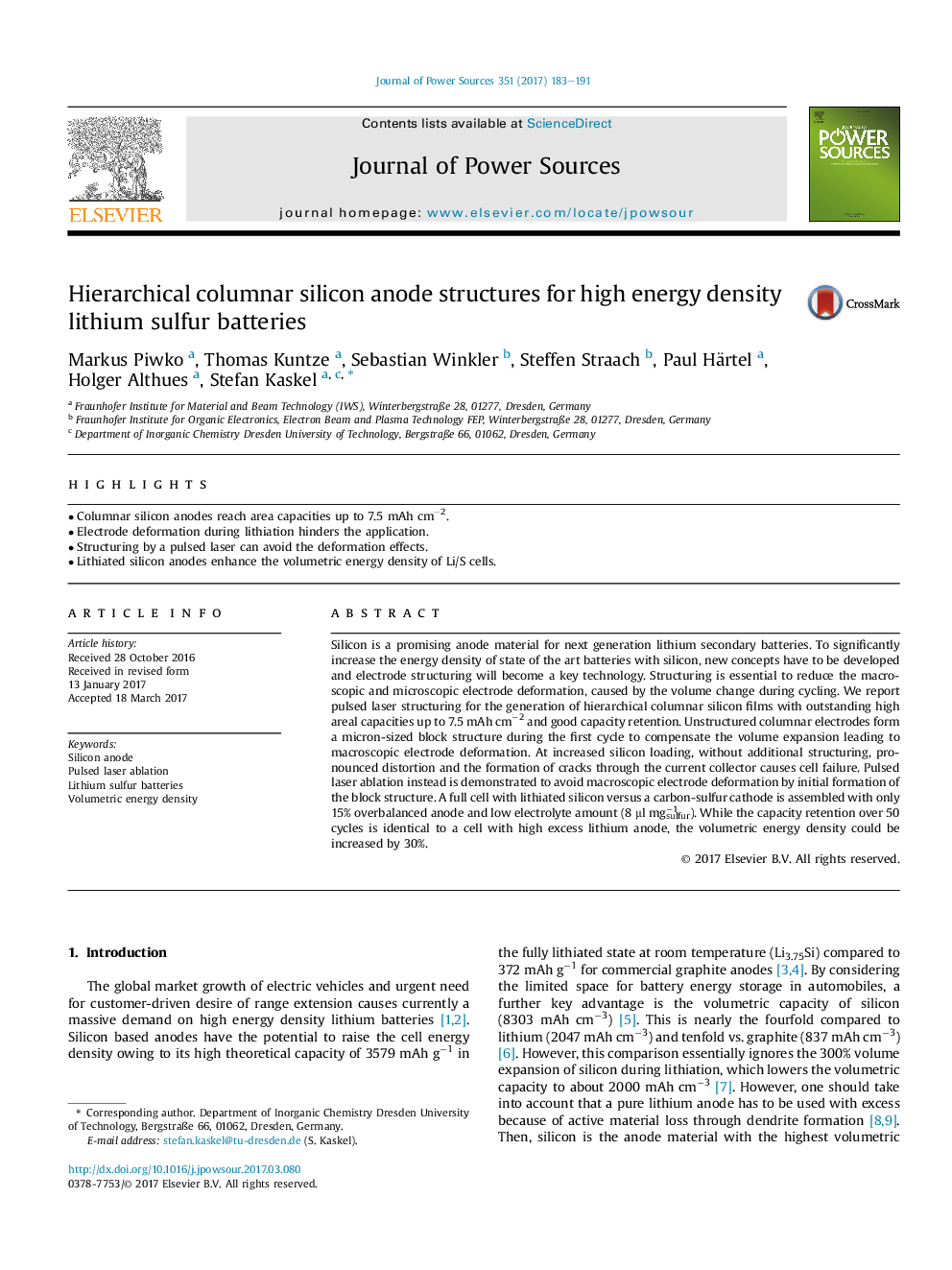| Article ID | Journal | Published Year | Pages | File Type |
|---|---|---|---|---|
| 5149367 | Journal of Power Sources | 2017 | 9 Pages |
Abstract
Silicon is a promising anode material for next generation lithium secondary batteries. To significantly increase the energy density of state of the art batteries with silicon, new concepts have to be developed and electrode structuring will become a key technology. Structuring is essential to reduce the macroscopic and microscopic electrode deformation, caused by the volume change during cycling. We report pulsed laser structuring for the generation of hierarchical columnar silicon films with outstanding high areal capacities up to 7.5 mAh cmâ2 and good capacity retention. Unstructured columnar electrodes form a micron-sized block structure during the first cycle to compensate the volume expansion leading to macroscopic electrode deformation. At increased silicon loading, without additional structuring, pronounced distortion and the formation of cracks through the current collector causes cell failure. Pulsed laser ablation instead is demonstrated to avoid macroscopic electrode deformation by initial formation of the block structure. A full cell with lithiated silicon versus a carbon-sulfur cathode is assembled with only 15% overbalanced anode and low electrolyte amount (8 μl mgsulfurâ1). While the capacity retention over 50 cycles is identical to a cell with high excess lithium anode, the volumetric energy density could be increased by 30%.
Related Topics
Physical Sciences and Engineering
Chemistry
Electrochemistry
Authors
Markus Piwko, Thomas Kuntze, Sebastian Winkler, Steffen Straach, Paul Härtel, Holger Althues, Stefan Kaskel,
